|
Cottonwood trees in morning light adjacent to the Santa Cruz River in Tubac. The bridge across the river is just visible to the far right of the photograph.
One of the regular nesters in this section of the Santa Cruz is the Rose-throated Becard, a flycatcher and the sole member of the subtropical and tropical family Tityridae (Ref: Birds of the World). They live year round in Central America and southern Mexico, with breeding populations extending north just up across the border into the southern tip of Texas and SE Arizona. They are so rare in the U.S. that Cornell's website All About Birds does not include them, but Birds of the World (a subscription site) does, as well as Audubon's online field guide. So, any birder in the U.S. who is doing a "Big Year" or adding to their life list flocks (!) to the Anza Trail in the spring and summer looking for this rare flycatcher. The Cottonwoods on the river bank are spectacular creating a natural cathedral lit by the morning sun. For the photo geeks: All landscape photos captured with an iPhone 13. On this day we did find a female Rose-throated Becard building her nest, high up in trees, hanging from a branch. These nests are usually built by a breeding pair, but this day we did not see the male. Note that his may be my first post in 6 years on a single species. I did capture images of other birds on our walk, but almost everything else seems like a let down! So here we go . . . . Rose-throated BecardCanon R6 with RF 100-500mm and 1.4x Extender, 420 mm, f/10, 1/4000 sec., ISO 32,000. Exposure bias +1 1/3 stops (EV). In the image above we see the female sitting on a branch next to her nest. Nests hang from branches and are constructed of sticks brought to the nest by both male and female. As mentioned earlier we did not see the male this day. For more on nest placement and construction, see Cornell's site, Birds of the World (subscription required). I was able to get a series of photographs of three separate trips to the nest by the female carrying twigs. For the photo-geeks: This nest was high in the trees, with very marginal light. I wanted to catch the bird in flight, since it was quickly apparent that she did not sit still for long, and once she took off for the nest, she made it to the side entrance pronto! I switched early on from mechanical shutter to electronic (Canon R6) shooting at 20 frames/second, generally at 1/2500 to 1/4000 second, with high ISO's that required some noise suppression post production. All shots were hand-held, although a tripod would have been nice. I have added camera data for each series, below. Trip #1Canon R6 with RF 100-500mm and 1.4x Extender, 700 mm, f/10, 1/4000 sec., ISO 40,000. Exposure bias +1 stop (EV). Series shot with electronic shutter (silent) at 20 frames/second, hand held. Frames shown are selected from ~20 images shot. The female would perch with a twig in her bill well away from the nest, and well out of the camera frame. She would then take off and enter the side entrance to the nest, on the left from this view. This nest looks like a basketball hanging in the tree. Trip #2These were shot at 20 frames/second, 1/2500 second. I hit the shutter as soon as I thought she was in flight. In the picture above we can see her approaching the nest, and can get a sense of scale. This is a big nest. The image below is the same as above, but cropped to show more detail of the bird. The female has a dark crown, and is rusty to rufous above and cinnamon to yellow below (Ref: Birds of the World). We can see the twig in the bill as she heads to the nest. Building a nest like this must take a lot of trips. A bit like building a brick home by carrying one brick at a time from Home Depot. She approaches the nest then makes her dive for the entrance. Trip #3Canon R6 with RF 100-500mm and 1.4x Extender,420 mm, f/9.4, 1/4000 sec., ISO 20,000. Exposure bias +1 1/3 stop (EV). Series shot with electronic shutter (silent) at 20 frames/second, hand held. Frames shown are selected from ~20 images shot. We all know that in our world, not everything goes as planned. So too for this bird as she makes another run with a twig in her bill. Above, she is perched to the right of the nest. Below, she takes off, and it appears that the twig is hung up on the branch, pulling her head back. Ouch! Above, it looks like she is doing a somersault mid-air. It appears that the twig has come free and she hangs onto it. She frees the twig and keeps flying, but appears to be off course (understandably!) and flies past the nest. She flies past the nest and climbs up and out of the frame to the left. We get good views of her underside and wings. When the tail feathers come together they look slightly forked. Twig in her beak, she is likely off to another perch to try again. Since we did not see a male Red-throated Becard on the 20th, I went through my archives and found a post from the Audubon Festival in 2017. Speaking of the Tucson Audubon festival, the annual Southeast Arizona Birding Festival will be August 10-14, 2022, at the DoubleTree by Hilton at Reid Park. Registration opens April 26th at 10 am MST (Arizona). I will be leading a photography workshop on Mt Lemmon on Friday the 12th of August. Check out the registration website. From the 2017 Archives: A Male Rose-throated BecardCanon 6D, Sigma 150-600mm C at 600mm, 1/500 sec., f/8.0, ISO 1000. During the Audubon Festival in 2017 we went on a field trip with Richard Fray that included a stop at the de Anza Trail near Tumacacori, where we located a male and female Red-throated Becard and their nest. In the picture above we see the nest hanging from branches, and the female sitting to the right. Canon 6D, Sigma 150-600mm C at 600mm, 1/500 sec., f/8.0, ISO 320. The male was much harder to locate, and even more difficult to photograph. He kept on the move on higher branches. I was able to capture these images. Above, he is almost handing upside down from a branch. Below he perches for a moment and we can see the rose colored throat characteristic of the species. Canon 6D, Sigma 150-600mm C at 600mm, 1/500 sec., f/8.0, ISO 640. That's all for now! More coming soon.
Happy Trails!
10 Comments
Female Vermilion Flycatcher at her nest with one hatchling peeking out below. April 13, 2022. Canon R6, RF 100-500mm with 1.4x extender at 420 mm f/10, 1/4000 sec, ISO 5000. Birds are born to do three things: Eat, don't get eaten (get lunch before you are lunch) and make more birds. Life is pretty simple. Mom will teach you everything you need to know (or it is stored in your DNA), no degrees required. So, come spring, "making more birds" becomes the prime activity of most of the avian population. So, let's see how this plays out at one of my favorite county parks, Agua Caliente, on Roger Road, waaaaay out on the east side, east of Soldier Trail. Stake out your spot and find a mate! A Pyrrhuloxia male defends his territory.Canon R6, RF 100-500mm with 1.4x extender at 700 mm f/10, 1/4000 sec, ISO 3200. Pyrrhuloxia are songbirds of the desert southwest and Mexico, closely related to the Northern Cardinal. During the breeding season, males are fiercely territorial. Wednesday April 13th I drove into the Agua Caliente parking lot, parking on the east side, right next to the eastern stretch of Sonoran desert. To my right two spaces down was a small station wagon parked right next to the northern curb, and up against the low understory. A male Pyrrhuloxia was sitting on the car's outside right mirror, doing battle with his own image. This car, and a nearby school bus, had parked close to the bushes where this male likely has a nest with his mate, and from his perspective, in his territory. As I watched, this male went back to his bushes, where I shot the images above and below. He is clearly looking around for any other males that might intrude into his territory. He moved over to the school bus, suspicious of intruders around every corner. Here we see him perched on the right outside convex mirror. He hopped down and caught sight of his own image, an "intruder" he needed to drive away. He launches himself toward the mirror. Showing his dominance he goes on the attack, eye to eye, beak to beak. He makes himself as large as possible. "No bird is as big as I am, and no one is going to mess with me in my territory." For the photo geeks: Canon R6, RF 100-500 mm lens with 1.4 extender at 420 mm, f/10 at 1/4000 sec, ISO 5000. This shot provides a good view of his tail and wing feathers. The convex mirror allows us to see the whole bird from a frontal perspective. The background was trees of the park, off in the distance creating a nice bokeh. I shot this series at about 12 frames/second. Well, size alone didn't work, so he gets his feet out in front of him and attacks with his claws. Foot to foot combat. "No one is tougher than I am." "Whew, that was close!" He manages to scare away the intruder, and stands triumphant, at least for the time being, on top of the mirror. "Hey there, you with the camera, DON'T EVEN THINK ABOUT IT!" Our combatant eventually retired to his bush, in time both vehicles left, and peace was restored. Note that this behavior is also observed in male and female Cardinals. See All About Birds: Northern Cardinals, under the heading Cool Facts. It may be more apparent to observers among the cardinals since they have a very wide range throughout North America, and live among human populations with a host of highly reflective surfaces. We can clearly see that the Pyrrhuloxia demonstrates the same behavior. Vermilion Flycatcher nest low in a Mesquite: Progress . . . .I have been following a Vermilion Flycatcher nest low in a mesquite tree at Agua Caliente since mid-March. The image above was captured on March 18th, showing the female building her nest, a long twig in her bill. The image directly below was shot on March 27th, 9 days later, showing the male feeding the female. It is quite likely she was sitting on a clutch of eggs at that time. This feeding behavior is typical of Vermilion pairs, allowing the female to spend as much time as possible on the nest. Canon R6, RF 800mm, f/11, 1/2000 sec, ISO 4000. Canon R6, RF 100-500mm with 1.4x extender at 420 mm f/10, 1/4000 sec, ISO 5000. April 13th, the eggs have hatched, and mom is sitting above one of her hatchlings, head just evident above the edge of the nest. Below, mom sits down to protect her chicks and keep them warm. On this day I spotted two heads in the nest, but there could be more. When a Mom needs to get all her ducks in a row . . . literally!Canon R6, RF 100-500mm with 1.4x extender, 631 mm, 1/500 sec., ISO 640. If nature photography was ice hockey, Wednesday I would have scored a hat trick! A male Pyrrhuloxia deranged by hormones, a momma Vermilion keeping her chicks warm, and a female Mallard with six ducklings on the pond. These fledglings need to be out and about to eat, but mom needs to keep them moving to avoid predators that would like nothing better than duck for dinner. She kept them moving, and also moved aggressively against other ducks. In the image above four of the fledglings move quickly to keep up with mom. They are leaning forward and paddling furiously. Below, paddling on, almost in a row . . . . . That is all for now! Best wishes for a Happy Passover Holiday and a Happy Easter!
Ash-throated Flycatcher, Tucson Mountain Park, March 29, 2022. Canon R6, RF 800mm f/11, 1/2000 sec., ISO 1250. We visited Tucson Mountain Park on January 6th, and I posted to this blog on the 21st. January has now given way to late March and the coming of spring to the Sonoran desert. For reference, below is a map of Tucson Mountain Park, a Pima County Park of ~20,000 acres to the west of Gates Pass. The park property includes Old Tucson (currently closed because of covid) and the Arizona-Sonoran Desert Museum. On January 6th we went birding with Jeff Babson as part of a Pima County program at the Ironwood Picnic area, shown by the three orange squares (representing the locations of photographs) at the bottom of the map. On Tuesday March 29th we returned for another tour with Jeff, this time in the Juan Santa Cruz Picnic area, at the top left of the map, right next to the Arizona-Sonora Desert Museum. Both maps from Adobe Lightroom Classic CC. For the photo geeks: If your camera has a GPS chip (geolocator) you can stamp each image with the location, as well as the date and time. LR Classic CC has a mapping function that takes this information and maps where you took each photo. Note that the Canon R6 does not have a GPS chip (nor does the R5) but I have added a Canon accessory that fits on the hot shoe and does the same thing. The map below is an enlargement of the Juan Santa Cruz area, showing more the detail of our route on the 29th. The photograph below was captured by my wife, DJ, as we were driving into the park, coming down from Gates Pass. We see a forest of Saguaro cactus on acres of rolling desert, surrounded by mountains. We are fortunate that this is a county park. I captured the image below as we started our walk. The forecast was for rain all day long, with thunder storms. However, we got lucky and stayed dry while central Tucson got drenched! Our first sighting of the morning was a Turkey Vulture, recently returned from wintering in Mexico, looking for something dead, but not too rotten, for breakfast. Canon R6, RF 800mm f/11, 1/500 sec., ISO 1600. Next, our first big songbird sighting for the day was a . . . Ash-throated FlycatcherCanon R6, RF 800mm f/11, 1/2000 sec., ISO 1600. Ash-throated Flycatchers are songbirds (Order: Passeriformes) in the family Tyrannidae, also knows as Tyrant Flycatchers. All About Birds lists 32 species in the U.S. For their list and photographs click here: All About Birds: Tyrant Flycatchers. For more on the challenges of identifying members of this family, see Kenn Kaufman's book Field Guide to Advanced Birding, chapters 25 and 26, or for a short introduction, this web page Arizona-Sonora Desert Museum, Tyrant Flycatchers. Ash-throated Flycatchers winter in coastal Mexico and Central America, breeding north into western Texas, SE Arizona, New Mexico, Colorado, Nevada and California. Year round populations live in Mexico and western Arizona. See the range map below from the Cornell website, All About Birds. This bird has likely arrived recently from Mexico either heading north, or here for breeding. They are desert dwellers, liking dry scrub and open woodlands from sea level up to about 9,000 feet. They will live near oak, juniper, pinyon pine, Joshua tree, yucca, palo verde, mesquite, acacia and ironwood. They nest in existing cavities in standing dead trees, or those created in prior seasons by woodpeckers. (Ref: All About Birds). Ash-throated Flycatchers eat spiders and insects of a wide range, including wasps and bees. They can also eat small fruits from cardon, saguaro and mistletoe. On the 29th we spotted this bird at some distance, moving very fast in the understory and foraging on the ground for insects. Ash-throated Flycatchers will also perch out in the open to find and catch insects on the fly. Canon R6, RF 800mm f/11, 1/2000 sec., ISO 1250. Ash-throated Flycatchers are slender with a long tail, a peaked crown, and an ashy gray face with a whitish throat. Canon R6, RF 800mm f/11, 1/2000 sec., ISO 5000. The 2 images below are not the sharpest, but show typical markings on the wings and tail. The primary feathers have cinnamon edges and the tail shows a cinnamon stripe that does not reach the tip of the tail. Males and females look similar. Canon R6, RF 800mm f/11, 1/2000 sec., ISO 2000. Canon R6, RF 800mm f/11, 1/2000 sec., ISO 8000. Black-throated SparrowCanon R6, RF 800mm f/11, 1/2000 sec., ISO 1000. Black-throated Sparrows are desert dwellers living year round in SE Arizona, as well as portions of California, Texas and much of Mexico. They prefer semiopen areas with evenly spaced shrubs and trees. They breed to our north into Nevada and Utah, nesting in shrubs often on the north or east side to maximize morning sun and afternoon shade. They eat insects and seeds. Like the flycatcher, this sparrow was busy foraging for food in the low understory. Canon R6, RF 800mm f/11, 1/2000 sec., ISO 4000. Cactus Wren: Spring NestingCanon R6, RF 800mm f/11, 1/2000 sec., ISO 2500. Cactus Wrens are ubiquitous throughout the deserts of SE Arizona, and on this day we were surrounded by them on our walk along the road. It is March, and definitely nesting time. In the image below, we see two birds, possibly a breeding pain near one of the nests. Males and females look alike. Canon R6, RF 800mm f/11, 1/1000 sec., ISO 2500. The female selects the nest site and begins building, with the male joining her to help out. The nests are built of coarse grass and plant fibers and lined with feathers. They have tunnel shaped entrances with very small openings to discourage predators. The nest below is between two Saguaro arms. (Ref: All About Birds). Canon R6, RF 800mm f/11, 1/500 sec., ISO 400. We spotted this second nest, below, within a Cholla. In the second frame, one of the birds appears to be working on nest construction. In the third frame the bird's face is just barely apparent looking out at the camera. Canon R6, RF 800mm f/11, 1/2000 sec., ISO 3200. Canon R6, RF 800mm f/11, 1/2000 sec., ISO 2500. Canon R6, RF 800mm f/11, 1/2000 sec., ISO 3200. Ravens: 2 Species in the Same Neighborhood . . .On April 4th we returned to the Arizona-Sonora Desert Museum for their raptor free flight demonstration, which led off with 2 Chihuahuan Ravens. I could not resist taking some of those images and adding them to the Common Raven we saw on March 29th. Common RavenCanon R6, RF 800mm f/11, 1/2000 sec., ISO 6400. Common Ravens are, believe it or not, songbirds, in the order Passeriformes, family Corvidae. There are 16 species in this family in North America, including Ravens, Crows, Jays and Magpies. They are well known for their advanced problem solving skills and the ability to use tools to get at food. Other members of this family we see in SE Arizona include Steller's Jays, Mexican Jays, and seen here, the ravens. For more on taxonomy see All About birds, Browse by Taxonomy. Common Ravens live year round throughout Alaska, most of Canada and the western U.S., down into Mexico and portions of Central America. They will eat almost anything, including carrion. Their menu preferences provided by the Cornell website is too good to pass up. "Common Ravens will eat almost anything they can get hold of. They eat carrion; small animals from the size of mice and baby tortoises up to adult Rock Pigeons and nestling Great Blue Herons; eggs; grasshoppers, beetles, scorpions, and other arthropods; fish; wolf and sled-dog dung; grains, buds, and berries; pet food; and many types of human food including unattended picnic items and garbage." Common Ravens live in nearly any habitat. They do well around human populations, including farms and rural settlements. In more urban areas they may be replaced by American Crows. (Note that crows live nationwide in the U.S., but north of SE Arizona. ) They nest on cliffs, trees, power line towers, telephone poles, billboards, and bridges. Canon R6, RF 800mm f/11, 1/2000 sec., ISO 6400. This Common Raven was spotted on a snag not far from the road, and between us and the desert museum. They are large birds, described as massive on the Cornell website, with a thick neck, shaggy throat feathers, and a sharp beak. Chihuahuan Raven: Raptor Free Flight April 4, 2022Canon R6, RF 100-500 at 100mm, 1/4000 sec., f/7.1, ISO 500. The Arizona-Sonora Desert Museum has 2 Chihuahuan Ravens in residence, both birds rescued and unable to be return to the wild. Chihuahuan Ravens are smaller than Common Ravens, with longer nasal bristles and white bases to the body feathers. These characteristics may be difficult to distinguish in the field, unless both species are side by side. Chihuahuan Ravens live in the southern central U.S. and Mexico, including Texas, New Mexico and portions of Arizona. They prefer hot, dry, open country with grasslands, generally away from urban populations. So, most of the ravens we see in and around Tucson are Common Ravens, with the Chihuahuan population more commonly seen out on the desert. In the image above, one of the ravens lands on a handler's glove, looking for some food. Below, the bird in profile. This bird has a radio tracking device in case he strays too far away, evident as the fine black line coming off of his back. Canon R6, RF 100-500 at 254mm, 1/4000 sec, f/7.1, ISO 1600. Canon R6, RF 100-500 at 100mm, 1/4000 sec, f/7.1, ISO 1250. In the images above and below we can see the primary and secondary feathers of the wings, the shape of the tail, and the length of the bill as the bird lands on the handler's glove. Canon R6, RF 100-500 at 254mm, 1/4000 sec, f/7.1, ISO 1250. Canon R6, RF 100-500 at 254mm, 1/4000 sec, f/7.1, ISO 1250. That's it for Tucson Mountain Park! More coming soon.
Happy Trails! |
AuthorHenry Johnson, photographer and author of this site. For more detail, see About
Categories
All
Archives
July 2024
|




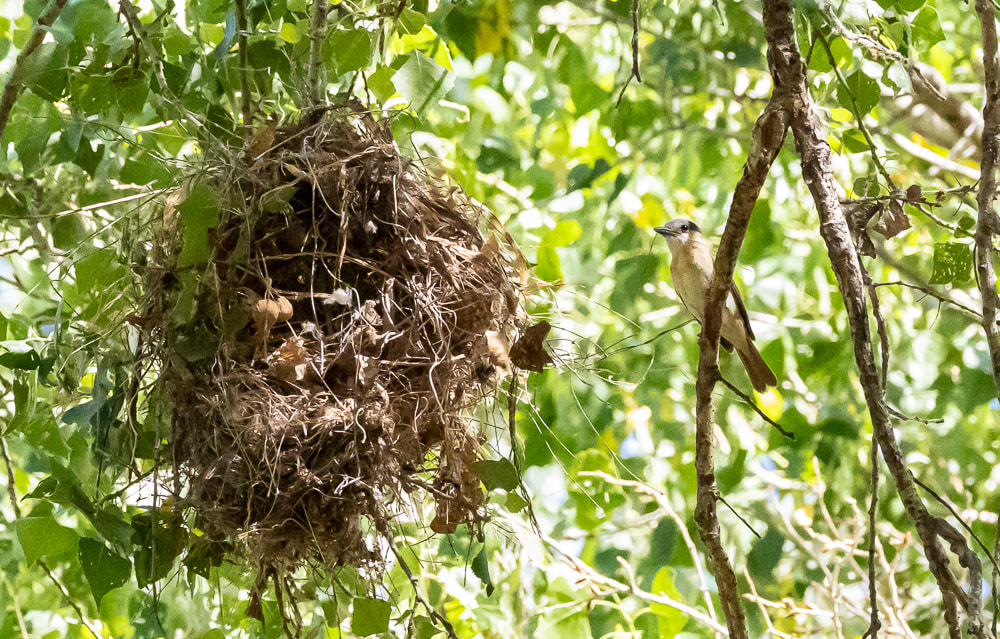



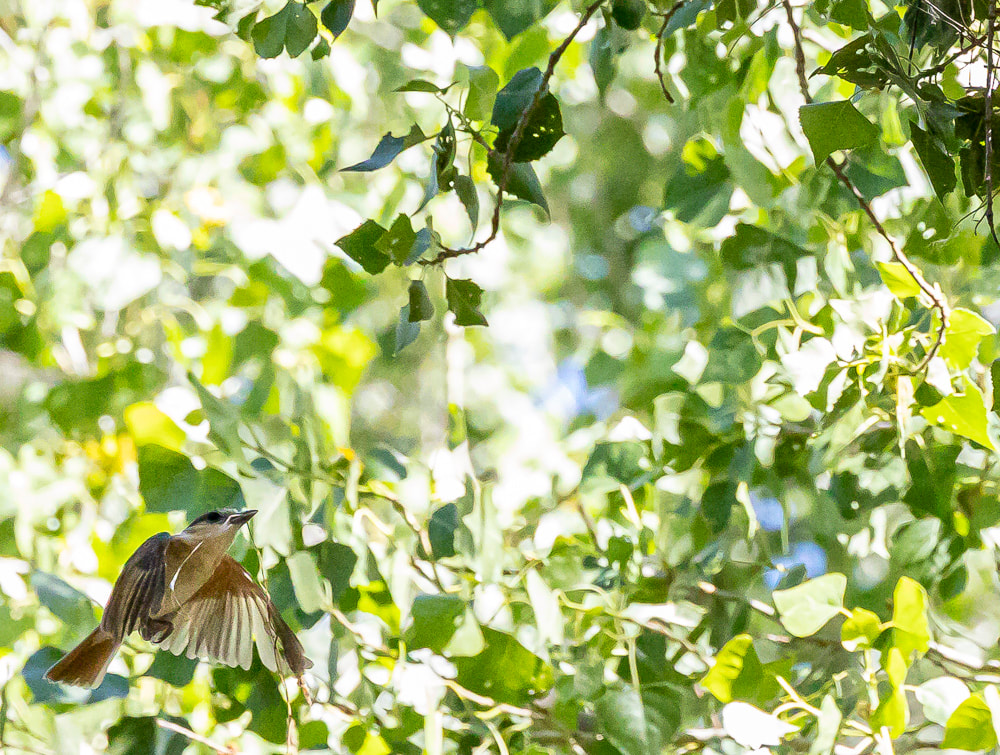


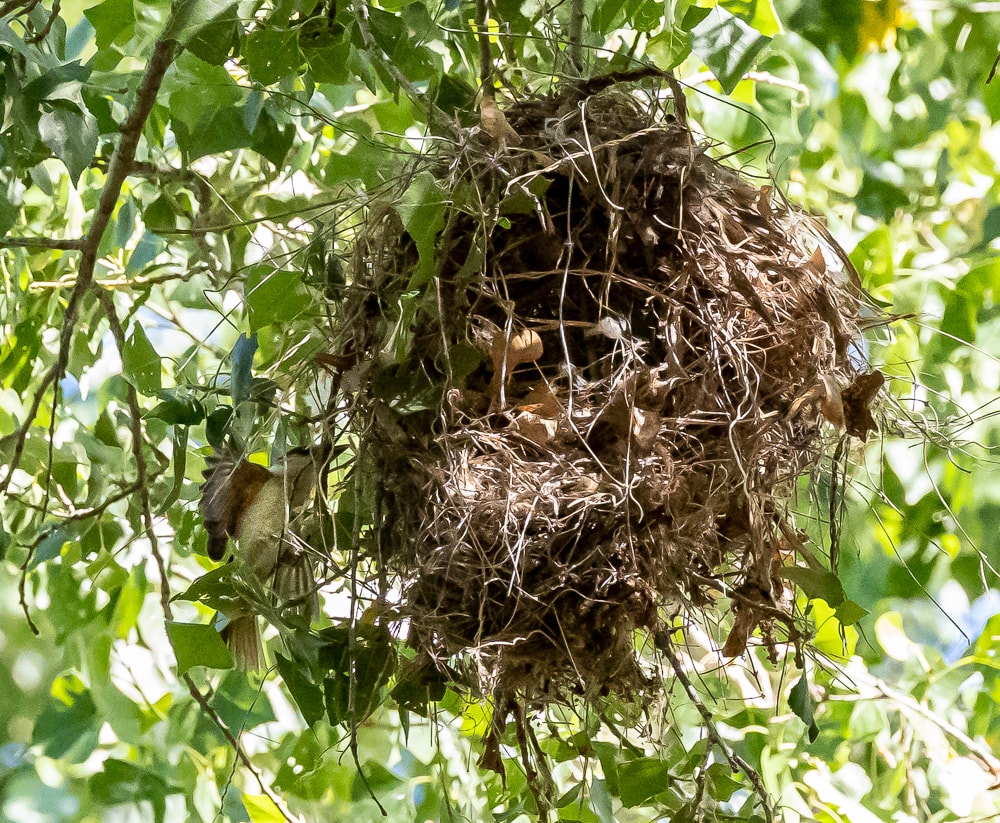
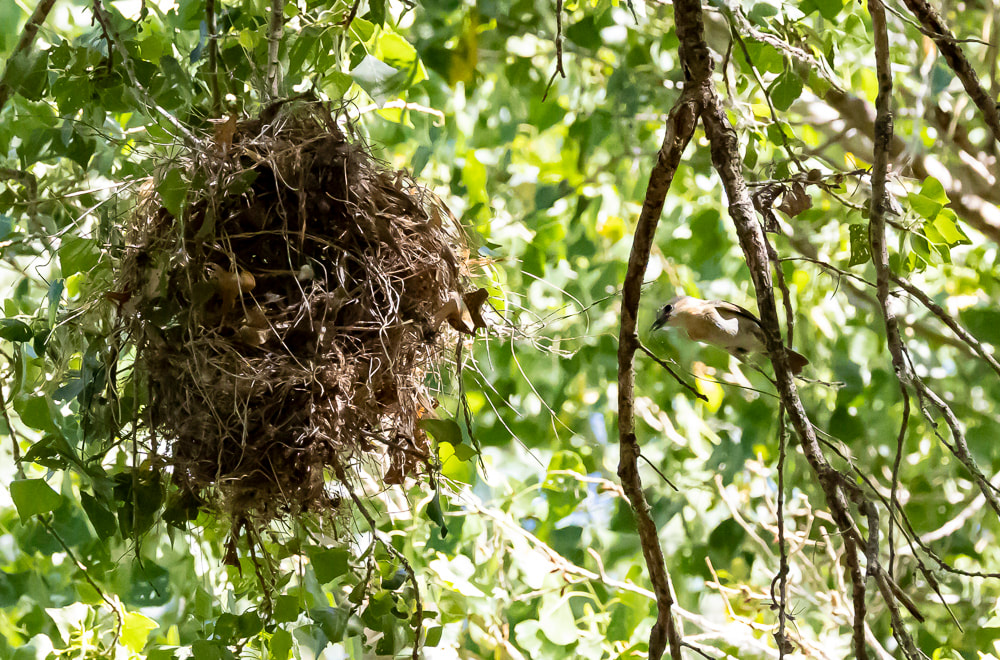
















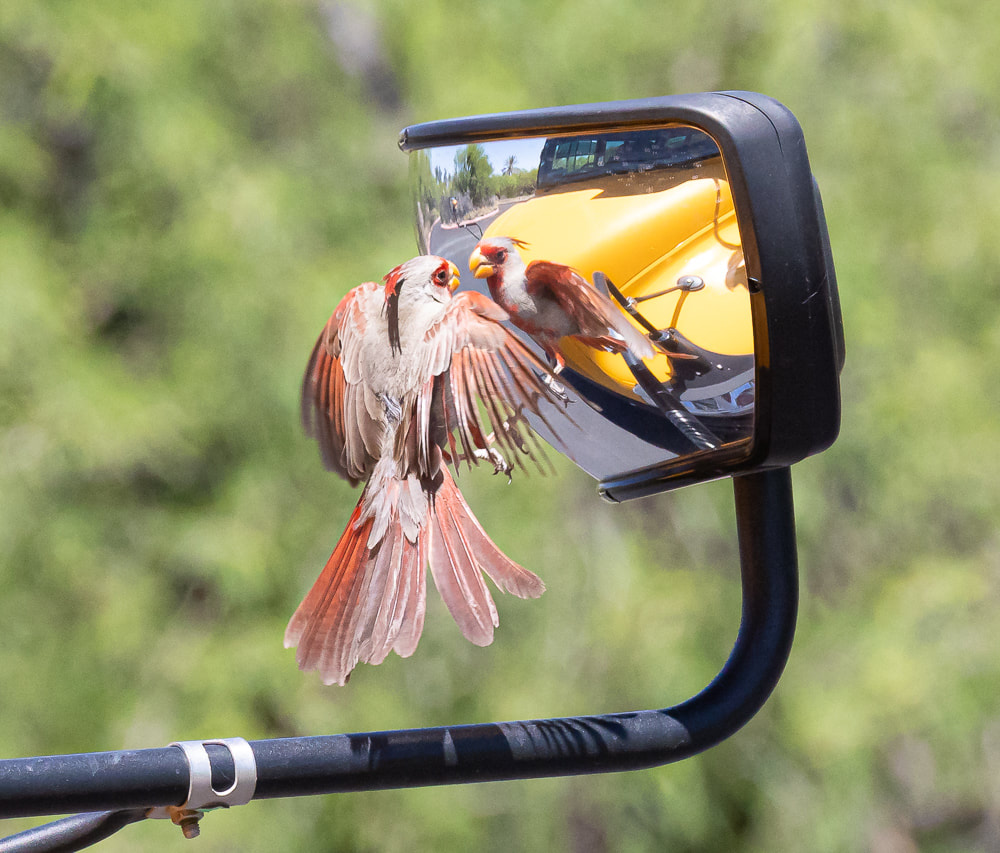





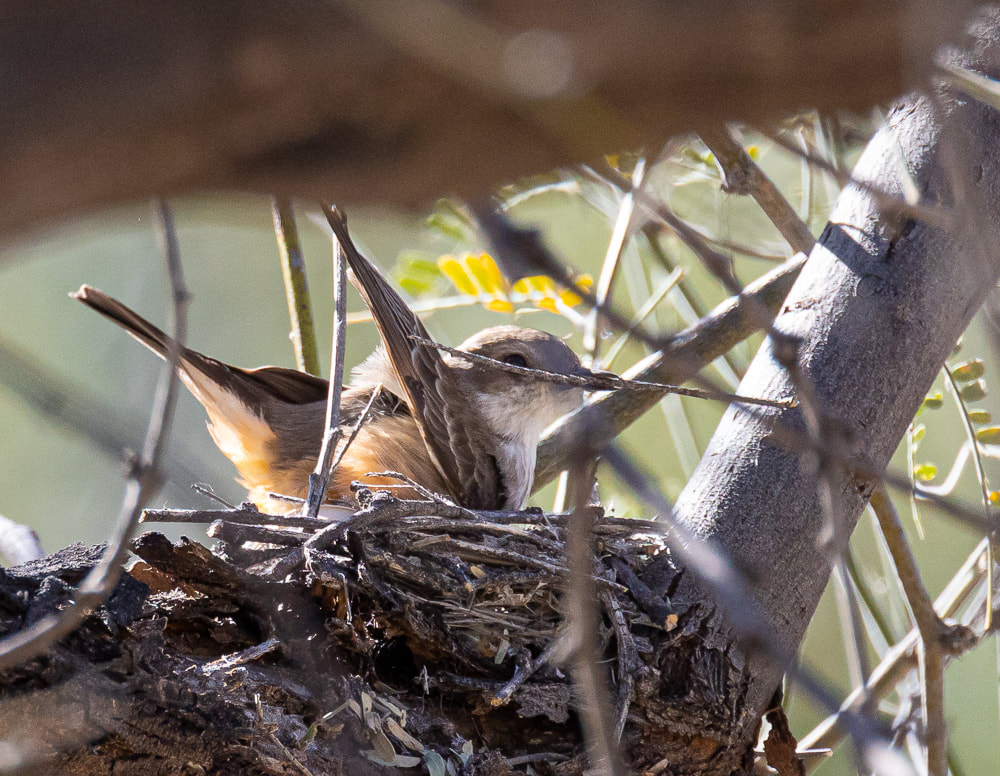






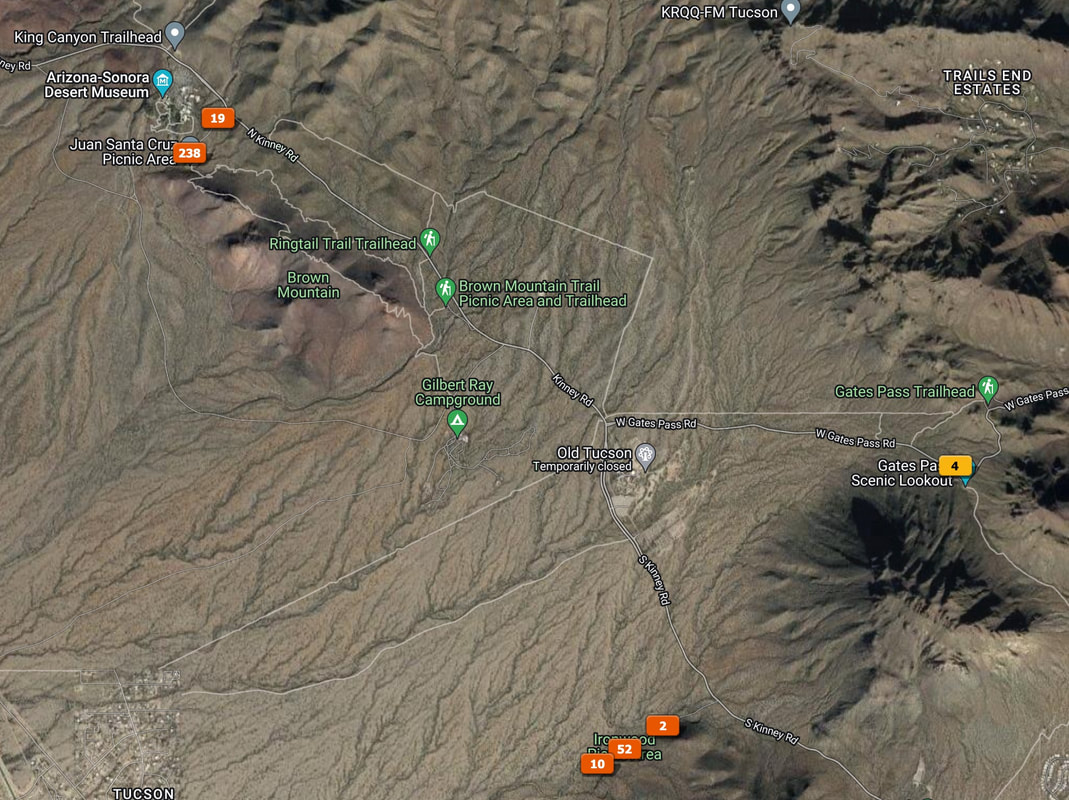












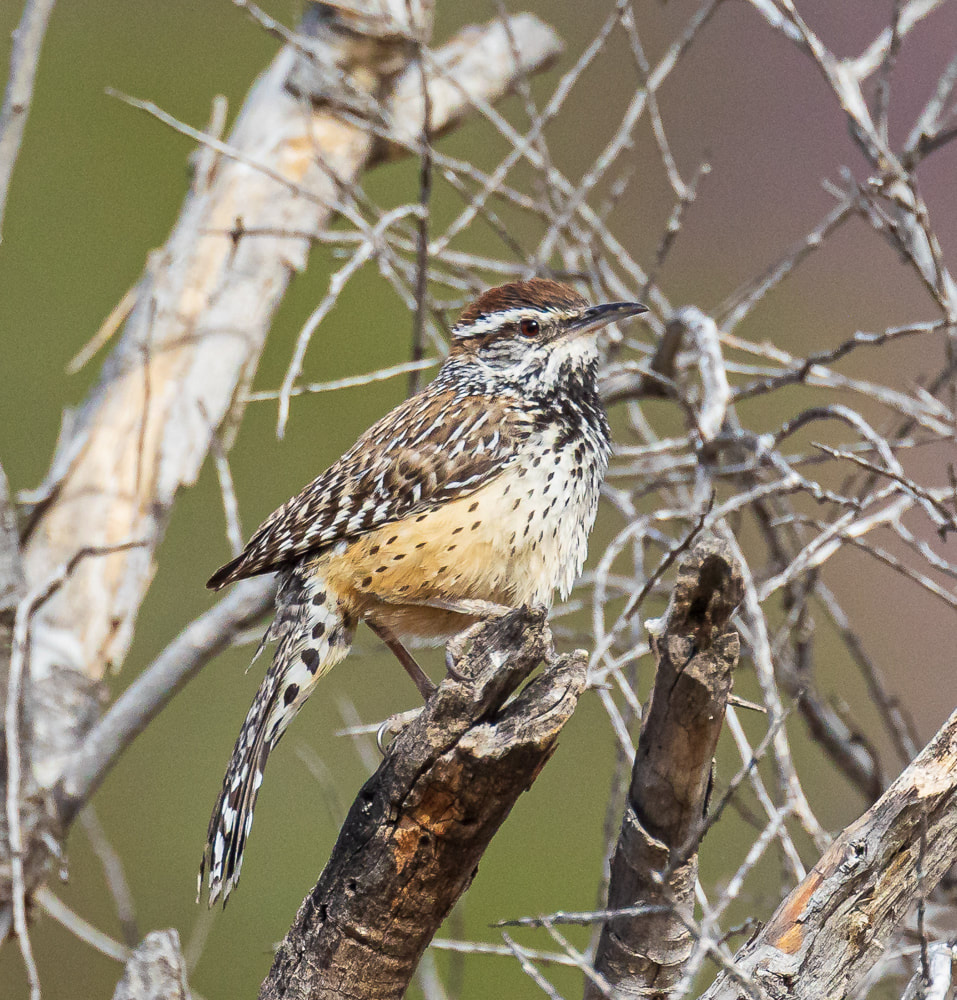










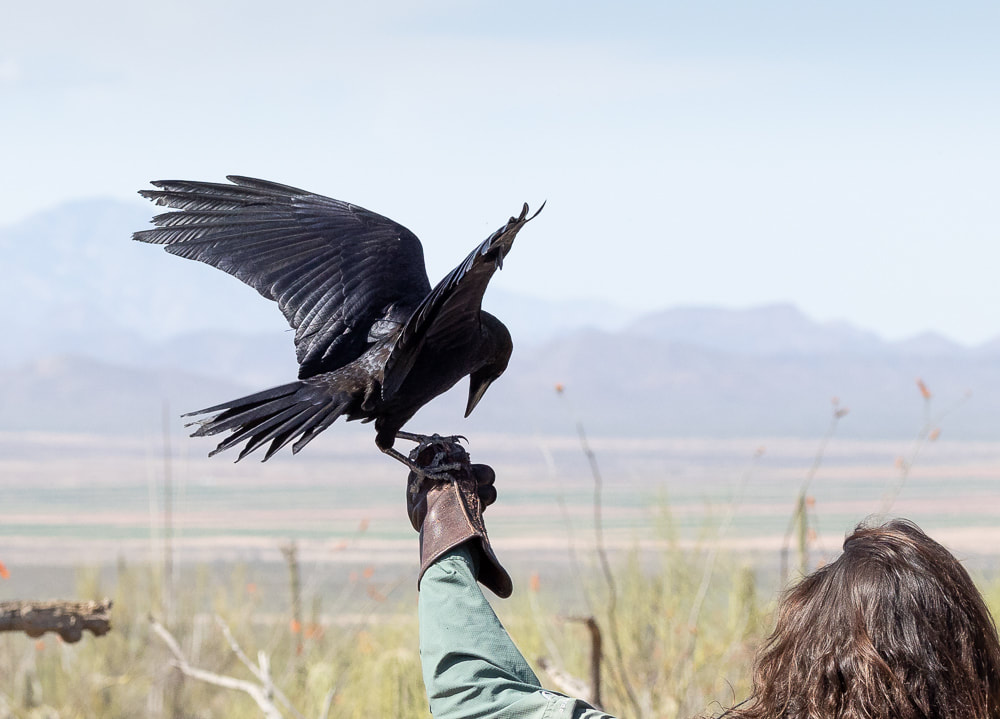


 RSS Feed
RSS Feed